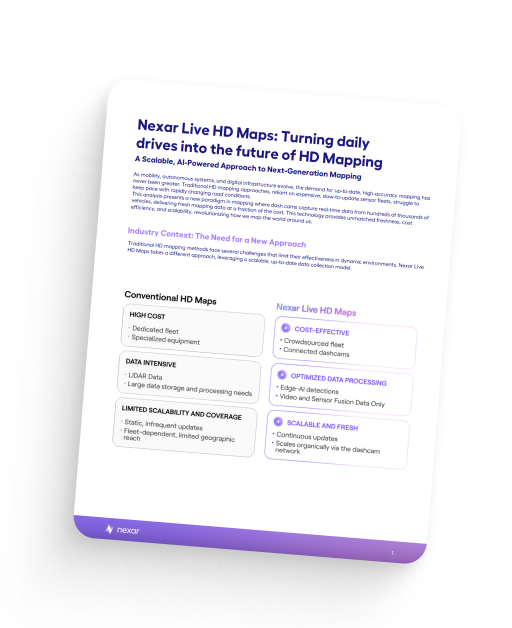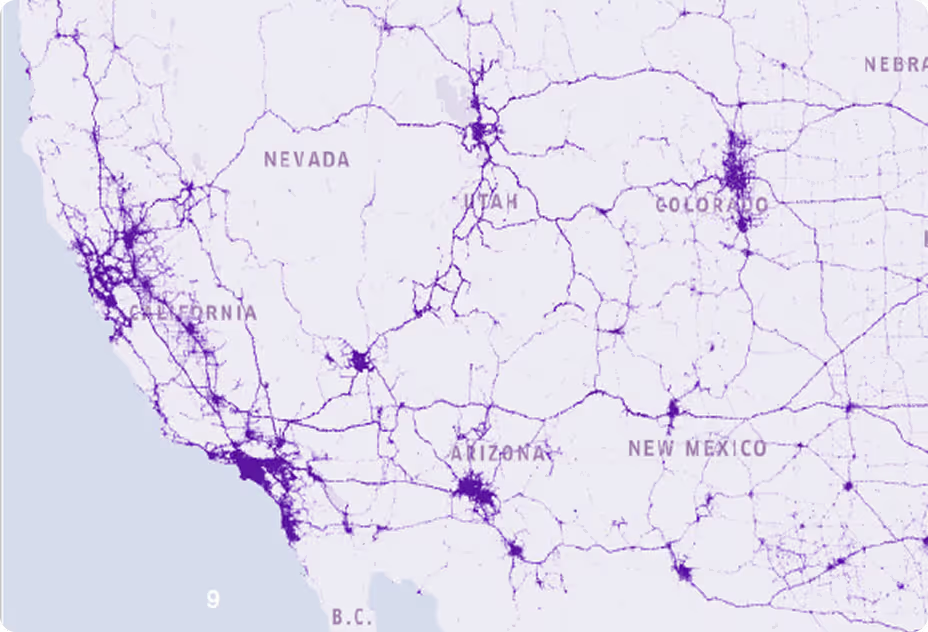Case study
Thanksgiving special
How the holidays change our driving
Rui Carneiro
Nov 20, 2025
3 minutes read

It’s clear to anyone that knows the importance of Thanksgiving day across the US that it impacts the regular life of all Americans. But this begs the question: How significantly, and in what ways, does driving activity during Thanksgiving week deviate from a regular week?
Week’s traffic impact
The first takeaway is unambiguous. Traffic volume drops sharply. Traffic is reduced by over 39% when compared to the regular average in November and December.
And also, as expected, the biggest reduction is on Thanksgiving day, with a contraction of more than 54% compared to other Thursday’s patterns.
Monday to Wednesday are definitely the days with the biggest movement, responsible for 17 to 18% of the week’s traffic each, and even during those days we can see a reduction of over 27% of traffic in the street.

The number of incidents also reduces 31.5% compared to regular weeks, with Thanksgiving again, dropping over 61% against Thursday’s average.
When looking into Thanksgiving week, we can clearly see that the safer period is the Thanksgiving day itself, not only with the lowest amount of traffic (10.9%) but also with the percentage of incidents being even lower, at 8.1%. This means that during this day, the chance of having an incident is 26% lower than normal.
The relation between Traffic amount to Incidents is relatively similar across the remaining week. But there’s a highlight on Tuesday and Wednesday, noticing a slight increase in the probability of registering an incident (+15% on Tuesday and +8% on Wednesday).
Once again, and recalling our previous analysis, it only gives credit to the empirical knowledge that a lesser amount of traffic on the road (and we can probably imply less stress as well) increases the safety on the road.
Deep-dive on the hours
We can see, in the days preceding Thanksgiving, that the behavior pattern is relatively similar to the one we’ve shared in the past analysis, with similar peaks and with an increased propensity to face incidents during daylight hours and biggest impact between 1 pm and 5 pm.
However, the difference versus any other week is the tendency to flatten the line and distribute in a more even manner the incidents across the hours (by Wednesday, we can distinguish sub-peaks by as soon as 10 am.).
The aftermath of Thanksgiving also shows a different pattern versus the regular week: from Friday to Sunday, we only see a slight recovery in activity and the peak tends to be slightly sooner, between 12 pm and 4 pm.
Also, the most dangerous hours during this week changes slightly, and we can see that 2 pm is on several days not only one of the peaks in incidents, but also one of the moments when consistently those surpasses the expected baseline. This tells us that the moments after lunch tend to be more dangerous than usual.

Thanksgiving evolution

Thanksgiving day is, as we all already expected, a very peculiar and particular day: the amount of traffic on the road is largely reduced, even compared to the week’s pattern. The activity line is relatively stable and almost “flat” across the day, and for almost hours, the incident level is below the expected baseline.Nevertheless, the evolution of both rides and incidents tells us that there are 2 moments to have in mind: the pre-dinner and the after-dinner.
The afternoon period, leading up to pre-dinner, has a steady and constant reduction of traffic since 12 pm, but we can distinguish a slight and sudden peak of incidents during the 6 pm block. Nothing like the regular everyday pattern, but a slight change in the evolution of the day.
Then, the most relevant period ranges from 10 pm until 12 am, where it’s noticeable an increase in the amount of incidents, especially compared to the amount of traffic on the road. In fact, at 11 pm, the propensity for incidents is 28% higher.
Different States, different impacts
The impact across the several states also highlights different impacts. The immediate attention goes to DC, where the regular propensity to register an incident jumps from a -0.66% likeliness to a +6.68% during thanksgiving day, an increase of 7.34 points.Other states such as Washington, West Virginia and Delaware also face an increase of over 1 point compared to the other regular day.
On the opposite side, Wyoming faces a nothing short of relevant reduction of incidents, going from the worst propensity on a regular day (+1.88%) to one of the shortest indexes during Thanksgiving (-1%), a reduction of 2.88 points. Hawaii also has a similar behavior and is worthy of mention.



